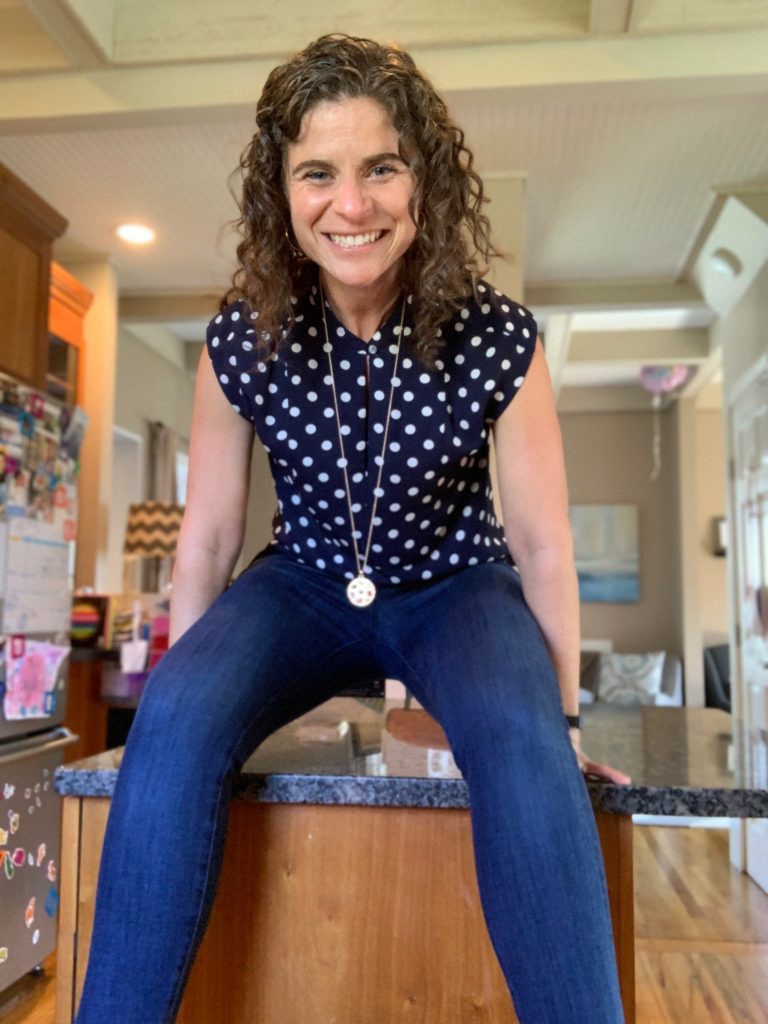At the start of this year, our Youth Education Specialist’s spring calendar was a color-coded masterpiece. Every weekday from March through June, Molly was scheduled to be in several classrooms- sometimes multiple schools in one day- and each color delineated the different grades and topics she would be teaching. We frequently poured over this calendar together — after yet another school would request an additional series of workshops — trying to figure out how we could meet their needs, without cloning Molly. With such a strong desire and passion for teaching youth about healthy relationships, Molly would often contort herself and her schedule to be in as many places as possible.

And then, COVID. Suddenly, Molly’s schedule, along with the rest of our prevention team’s, was a nearly blank slate. One of the few things that did not get deleted from her calendar was participating in Project Evident’s Talent Accelerator cohort- an opportunity we had to strengthen our evaluation methods and practices for our youth education work. As it became clear that we would not be invited back into physical classrooms for the rest of the 2019-2020 academic year and likely not in 2020-2021 either, we reflected on the questions the Project Evident staff posed to us in cohort meetings and individual coaching sessions: Was our Youth Education programming as we had been doing it (before the pandemic) working? Who was it working for? Was it accessible to all students? Was it achieving lasting change? Project Evident challenged us to ask ourselves: what was working for whom, and why. Unable to continue our frenetic “business as usual” pace, we were afforded the opportunity to reexamine our approach to prevention work.
For so long, organizations that sought to do sexual and domestic violence prevention work focused on getting in front of young people. We struggled to gain access to classrooms, youth groups, and any place or space occupied by young people. When we talk with funders about our prevention work, their questions and interest are always centered on the work we do with young people. There have been a lot of initiatives in Massachusetts and across the country to make healthy relationship education mandatory in high schools and even middle schools. ALL of this is important. It is also important to recognize how much we are asking of young people. Often we put all of our focus and efforts into teaching youth how to have healthy relationships and call out abusive behaviors without pausing to reflect on how we, the adults, are- and are not- doing this.
Primary prevention is often described as preventing violence or harm before it ever occurs. When we adhere to this definition, we put our efforts into working directly with youth, assuming that if we can reach them before they start dating and teach them the right skills and language to identify abusive behavior and call it out, then they will be prevented from experiencing harm. But many young people are exposed to trauma even before they are born. Studies have shown how domestic violence impacts neonatal health and birth outcomes. Even with the absence of interpersonal violence, babies can experience trauma such as systemic racism before they’ve taken their first breath. Black women experience unacceptably poor maternal health outcomes and are three times more likely to die during pregnancy and childbirth.
In order to create effective violence prevention strategies, we have to broaden our understanding of violence itself: rather than narrowly focusing on individual experiences as if they exist in a vacuum, we have to pay attention to the trauma and harm perpetuated by systemic oppression. Primary prevention isn’t about stopping violence before it occurs to one individual, it’s about changing the systems and social norms that allow violence to continue to be perpetuated toward so many people.
We can equip individuals with knowledge and skill building, as long as we are also working at the systems level to ensure that the change we hope to create is both possible and sustainable. If we come into a classroom and teach a series of workshops on consent and healthy relationships, but the students don’t see those same concepts being supported and modeled in the rest of their school experience or home lives, how do we expect that information to take root and change attitudes, beliefs, and behaviors? If we encourage students to call out abusive behavior, but the school’s culture and social norms send the message that you are more likely to be socially ostracized for calling out abusive behavior than if you yourself perpetrated the abuse, can we blame them for being hesitant and afraid? If we tell a Black student in one of our classes that a healthy relationship centers on respect and trust, but they are punished more severely and more often than their white peers, can they trust or believe in anything we say?
At REACH, we think a lot about youth leadership development and empowerment. We get to witness firsthand the incredible expertise and ingenuity of the students we meet in the classroom and work alongside in the Peers Against Violence Educators (PAVE) club. If we want youth to be successful in leading change within their own lives and communities, we have to acknowledge the barriers that exist to effecting that change. And we have to work to address those barriers. We often ask young people to solve the problems they inherited from us without recognizing how little autonomy they have in their own lives. As adults, we have a responsibility to use the privilege and power we have to make it possible for young people to lead each other, and us.
It is, and has been, a privilege to be invited into so many schools and youth-spaces over the years. As this school year approaches, our prevention team is preparing for a year that will be unlike any other we’ve experienced. While we feel a lot of sadness about not engaging with people in the same ways, this reality has challenged us to reimagine our work and how we can partner with schools and youth-serving organizations to strengthen our collective efforts to foster healthy relationships and ultimately prevent domestic violence.
In the engagements we were able to have virtually with students and educators this spring and summer, I was reminded again and again that prevention work and healing work are not mutually exclusive, but rather inextricably linked. When I would lead workshops that addressed the impact of domestic violence on students during COVID-19, it was important to explicitly name that there are teachers, staff, and administrators who are also trapped at home with an abuser. Many students have been and are being harmed by systems of oppression, and many of their teachers, coaches, and family members are being harmed as well. This pandemic has spotlighted a multitude of broken systems and areas for growth and change throughout our communities. COVID-19 has inflicted so much loss. It has also forced us to reexamine and reimagine what has not worked before and what we can do better, moving forward.
Without the ability to teach in classrooms, we at REACH are focusing our efforts on supporting administrators, clinicians, teachers, and parents to empower them to engage in conversations with young people- proactively and responsively- about relationships, consent, healing, and prevention. As we work during and through the collective trauma of this pandemic, we are developing online tools and practices to offer to the amazing teachers and school counselors who continue to go above and beyond to support their students. We have been particularly excited to offer trainings on the cumulative toll of trauma exposure to several school partners in recent months, and hope to continue to offer similar conversations as schools prepare to begin a new academic year to help us all show up and support the young people in our lives. We will continue to work to be a source of support for individuals and communities who are working to heal and to change.
REACH has created multi session online curricula, interactive presentations and small group facilitated conversation tools to support ongoing professional development. To learn more about the trainings and professional development opportunities REACH offers, please e-mail Jessica@reachma.org.





